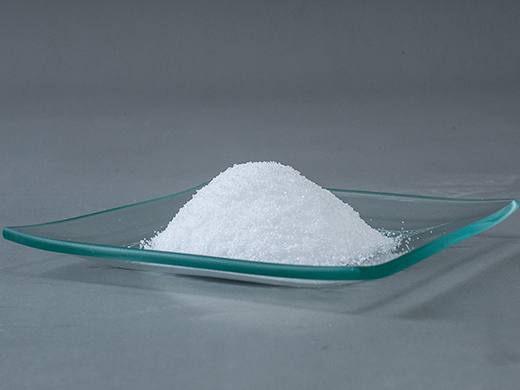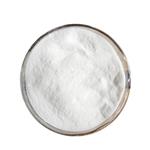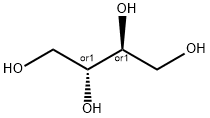Different applications of erythritol
Introduction
Erythritol is a bulk sweetener, a four-carbon sugar alcohol with the molecular formula C4H10O4. Erythritol is widely found in nature, such as fungi mushrooms, lichens, melons and fruits, grapes, pears, eye lens, plasma, fetal fluid, semen, and urine of animals. It can also be detected in small amounts in fermented foods. It is also present in small amounts in wine, beer, soy sauce, and sake. [1] It can be obtained by fermentation of glucose. It is a white crystalline powder with a refreshing sweet taste, not easy to absorb moisture, stable at high temperature, stable in a wide pH range, and has a mild cool feeling when it dissolves in the mouth. It is suitable for a variety of foods.

Picture 1 Erythritol powders
Features
The sweetness of erythritol is low, the sweetness of erythritol is only 60%-70% of sucrose, the entrance has a cool taste, the taste is pure, and there is no post-bitterness. It can be used in combination with high-intensity sweeteners to inhibit its Undesirable flavors of high-intensity sweeteners. Erythritol has high stability, is very stable to acid and heat, and has high acid and alkali resistance. It will not decompose and change at temperatures below 200 °C, and will not undergo Maillard reaction to cause discoloration. The heat of dissolution of erythritol is high: erythritol has an endothermic effect when dissolved in water, and the heat of dissolution is only 97.4kJ/kg, which is higher than the endothermic degree of glucose and sorbitol, and has a cooling feeling when eating. The solubility of erythritol at 25 °C is 37% (W/W). With the increase of temperature, the solubility of erythritol increases, and it is easy to crystallize and separate out crystals. Erythritol is very easy to crystallize, but it will not absorb moisture in a 90% humidity environment. It is easy to be crushed to obtain a powdery product, which can be used on the surface of food to prevent food from absorbing moisture and deteriorating.
Preparation
The production of erythritol can be divided into two types: microbial fermentation and chemical synthesis.
The production of erythritol by microbial fermentation began in the 1990s, and erythritol is produced in large quantities by microbial fermentation internationally. The carbon sources for the production of erythritol include alkanes, monosaccharides and disaccharides, etc. Glucose, fructose, mannose and sucrose are all good carbon sources for the production of erythritol, of which D-mannose has the highest conversion rate of 31.5 %. However, due to cost factors, mainly starchy raw materials such as wheat or corn are degraded by enzymes to generate glucose, which is fermented by hyperosmotic yeast or other strains, and can produce erythritol. Trichospora, Trichoderma, Pichia, etc. The industrial production process of erythritol fermentation method is as follows: starch → liquefaction → saccharification → glucose → production strain fermentation → filtration → chromatography → purification → concentration → crystallization → separation → drying, and finally erythritol is obtained. The average yield is about 50%. Studies have shown that the erythritol fermentation method is affected by many factors, such as the change of osmotic pressure, which obviously affects the formation of polyols, the inorganic salts Mn2+ and Cu2+ can improve the yield of erythritol, and both oxygen and temperature affect the yield. Compared with chemical synthesis method, fermentation method has more production advantages.
The chemical synthesis method can be achieved by reacting butenediol with hydrogen peroxide, then mixing its aqueous solution with an active nickel catalyst and adding inhibitor ammonia water, passing hydrogen at about 0.5MPa, and hydrogenating it to obtain erythritol products. The production efficiency is low, and industrial production has not yet been realized.
Application fields
In recent years, erythritol has been used in the development of new zero-calorie and low-calorie beverages. Erythritol can add sweetness, heaviness, and lubricity to beverages, while reducing bitterness. It can also mask other odors and enhance beverage flavor. Erythritol can also be used in refreshing solid beverages because erythritol absorbs a lot of heat as it dissolves. Erythritol can promote the solution combination of ethanol molecules and water molecules, alcoholic beverages can reduce the odor and sensory stimulation of alcohol, and can effectively improve the quality of liquor and wine. Erythritol can also significantly improve the bad odor of plant extracts, collagen, peptides and other substances. Therefore, at present, erythritol has been added to the formulation of some collagen products to improve the taste.
Sucrose and oil are the main raw materials for making baked goods. They play a very important role in forming the unique organizational structure, taste and flavor of baked goods, and are indispensable raw materials for the production of high-quality baked goods. Especially in the production of baked goods, sugar has a great impact on the rheological properties, process and product quality of dough, in addition to increasing sweetness, coloring, and improving preservation. The production process and good product quality are very important conditions. However, with the improvement of modern consumers' consumption level and the enhancement of health awareness, this kind of "high-sugar, high-fat and high-calorie" products can no longer meet the needs of consumers. The bakery industry is also developing towards nutrition, health, functionality, and low calorie, and low-energy, sugar-free bakery products emerge as the times require. However, the low-energy or sugar-free baked goods produced by some manufacturers only partially reduce the use of fat and sugar, but it is not enough to reduce the use of fat and sugar, and it is easy to cause poor sensory quality of the product, which is difficult to suffer from. Diabetes, obesity, and others are happily accepted. Therefore, substitutes such as dietary fiber, oligosaccharides, sugar alcohols, and fats should be used to simulate the functions of oil and sucrose as much as possible while reducing the energy of the product and meeting the consumption needs of some consumers, so as to improve the acceptability of the product. sex.
The substitution of sucrose is mainly the method of combining strong sweeteners with low-intensity bulk sweeteners or fillers, such as oligosaccharides, sugar alcohols, etc. The replacement of fat is mainly achieved by carbohydrate-type simulated fat. Low DE maltodextrin is a good choice these days, it has the appearance and mouthfeel of cream, but is much lower in calories than fat.
For high-quality functional or low-calorie bakery products, erythritol is a proven ingredient. It can not only replace sucrose physicochemically but also bring health benefits, and bakery products using erythritol have better structural tightness and softness than products that also use sucrose as raw material, And have different mouth melting and subtle color differences. The erythritol used in bakery products is preferably powdered or crystallized with fine particle size (<200μm).
Application of erythritol in bakery products
Bakery products are difficult to prove that their products can reduce calories due to the high content of flour, cream, and sucrose in them. However, the application of erythritol can easily solve this problem. For cake products, adding erythritol can reduce calories by at least 30% without negative effects after use. In heavy sugar and heavy oil cakes and sponge cakes, erythritol and maltitol are used to completely replace sucrose, which can produce low-sugar and sugar-free products with good taste and good shelf life. Compared with sucrose-based products, products using erythritol can prolong the shelf life. Erythritol can not only inhibit the growth of microorganisms in bakery products, but also maintain the freshness and softness of products. This is brought about by the water retention of erythritol itself. Adding 10% erythritol to biscuits can successfully improve the stability and shelf life of such products. Soft and hard sandwich biscuits can also replace sucrose with a mixture of erythritol and maltitol, and the effect is equally good; and the use of erythritol and sucrose in hard biscuits will greatly reduce the calories.
The use of erythritol can also produce good quality bakery product additives, such as jam, cream, butter icing and some surface decorations. Adding erythritol to jams can enhance natural fruity indicators. Adding erythritol to butter icing (full fat) not only reduces calories but also provides a cool taste; when products are combined with erythritol, maltitol liquid and aspartame, the energy value can be reduced by nearly 50% . Cream is a traditional "fat-sweetened" ingredient, including sucrose. Cakes and sandwich biscuits that use cream as an additive contain high calories and can bring a typical fat-type soft taste, which is very popular with most consumers. , However, this feature is unacceptable for products that reduce energy, and "high fat and high calorie" discourages many people. Adding close to 60% of the product and fine-grained erythritol will bring more benefits to the product: it is sure to reduce some calories, and it can bring a cool taste, dilute the fat and soft taste, and make the product have Cool and refreshing and other attractive advantages. Products using erythritol have a longer shelf life than conventional sucrose fat-based bakery products.
Application of erythritol in candy
Nowadays, the candy and chocolate market has also been transformed and extended from the early use of sucrose as the basic raw material to the new low-sugar and low-calorie sugar-based products as raw materials. Consumption hotspots and development priorities in the candy market, with huge market potential. However, not all low-calorie and low-sugar sugar bases can replace sucrose for the production of candy and chocolate. The new raw materials used must be able to replace sucrose from the point of view of taste and physicochemistry, and must also be beneficial to human health. After long-term practical research, it has been proved that the new functional raw material erythritol fully meets the requirements. The taste of erythritol is the same as that of sucrose. There is no need to add strong sweeteners such as aspartame or saccharin. Compared with other "non-sucrose" candies, the resulting candy has a refreshing and cold taste, and its sweetness is pure and has no bad aftertaste; and the combined use of erythritol and other sugar alcohols can increase the tolerance to reduce the effect of single use. risk. It is best to use high-purity erythritol crystalline powder in confectionery chocolate, which can obtain better quality and taste.
Erythrose can produce a variety of candies of good quality, the texture and shelf life of the products are exactly the same as traditional products. Since erythritol is easily crushed and does not absorb moisture, the prepared candies have good storage stability even under high humidity storage conditions, and are also beneficial to the health of teeth without causing dental caries.
Application of erythritol in soft candy
The microbiological test shows that the majority of crystals of good quality soft candy should be between 5 and 10 μm. The production of soft candy with pure erythritol produces a high degree of crystallinity, but the addition of erythritol and erythritol is less than 40%. The combination of 75% maltitol liquid can control the crystallinity well. The use of erythritol in mint-type gummies can help achieve a good cooling taste. Cough candy is generally a kind of rock candy product that is mixed with a variety of fine sugars and added with water to form a solid adhesive mass, which is then dried and pressed. Polyhydroxy compounds such as erythritol, maltitol, isomalt and lactitol can be added to lozenges to obtain low-calorie, anti-caries products. The mixture of erythritol, lactitol and crystalline maltitol can replace traditional sucrose raw materials to produce cough drops. In addition to the low-calorie and cooling effect, erythritol also has good texture and inconvenience that lactitol and crystalline maltitol do not have. Hygroscopic. Adding erythritol as a filler to rock sugar can bring a good cooling taste to rock sugar. Moreover, the fast crystallization speed of erythritol enables rock candy to be quickly and conveniently prepared in an anhydrous environment, and such rock candy can also have a good shelf life in a dry, unpackaged environment.
Application of erythritol in fondant
Erythritol is the only sweetener of all polyols that can be used to produce sugar-free fondant, and is typically used in combination with liquid Maltidex 100. Using this method, we only need to control the whipping time and operating temperature to obtain sugar-free fondant with different textures. This product not only has a pleasant cool taste, but also has a pleasing appearance, with good consistency and good shelf life. Fondantose made from erythritol ingredients has better stability due to lower residual moisture content and water activity. The product reduces heat by about 65%.
Application of erythritol in chewing gum
Chewing gum is made by mixing fine crystals of sugar and edible gum. Erythritol is easy to pulverize and has low hygroscopicity. It is suitable as a sweetener for chewing gum, and this chewing gum is cool, low-calorie, and non-cariogenic, and can be used to make "beneficial teeth" chewing gum. Most low-sugar chewing gum products will gradually become hard and brittle over time. If some low-sugar ingredients are replaced with alcohol and erythritol, a longer shelf life will be obtained, and the chewing gum will have good elasticity and softness. In chewing gum coatings, the best coatings generally use 40% erythritol in combination with other hydroxy compounds such as sorbitol and maltitol. Not only high moisture absorption resistance, cool taste, but also better chewability and scaffolding than xylitol can be obtained, and erythritol coating can shorten the crystallization time by 30%.
Application of erythritol in chocolate
Erythritol has the characteristics of good thermal stability and low hygroscopicity, and can be operated in an environment above 80 ° C to shorten the processing time. This helps to promote the production of flavor. Erythritol can easily replace sucrose in the product and reduce the energy of chocolate by 34%. No other sugar alcohol can provide such energy reduction value, and give the product a cool taste and non-cariogenic characteristics. Due to the low hygroscopicity of erythritol, it helps to overcome the blooming phenomenon when making chocolate with other sugars.
Pharmaceutical industry
The properties of erythritol, such as anti-caries, anti-oxidation, moisturizing and non-flammability, make its application in the fields of medicine and daily chemicals continue to expand.
Advantages of erythritol over xylitol
Erythritol is a natural zero-calorie sweetener, and xylitol is caloric. Erythritol is more tolerated than xylitol. All sugar alcohols will cause diarrhea if they are eaten too much, and there is a problem of tolerance, and erythritol is the highest tolerated by the human body. Erythritol has a lower mean glycemic index and mean insulin index than xylitol, so erythritol has less effect on blood sugar and also has antioxidant activity. Many sugar alcohols feel cool when eating. This cool feeling comes from dissolving and absorbing heat. When dissolving, it absorbs your heat, so we feel cool. The degree of cooling sensation of each product is expressed by the coefficient of heat of dissolution and absorption. Erythritol has the highest heat of dissolution and absorption, and its cooling sensation is the highest. In terms of production process, erythritol is the only one among all sugar alcohols produced by fermentation, which is closer to natural transformation and extraction. Other sugar alcohols are produced by hydrogenation, so the production process is different. Erythritol is basically not hygroscopic, and other sugar alcohols have different degrees of hygroscopicity. Xylitol is mainly used in the field of candy and medicine in Europe. Although xylitol is added in an appropriate amount in FDA and European regulations, excessive intake of xylitol can cause symptoms such as elevated blood sugar and diarrhea.
Reference
1 Jiang Xirui, Huo Xingyun, Huang Jihong, Sun Zhongtao edited. Bio-fermentation industry technology. Beijing: China Light Industry Press, 2016.05: 297
);You may like
See also
Lastest Price from Erythritol manufacturers

US $0.00/Kg/Bag2024-04-26
- CAS:
- 149-32-6
- Min. Order:
- 1KG
- Purity:
- 99.5%
- Supply Ability:
- 5000mt/year

US $0.00/KG2024-04-23
- CAS:
- 149-32-6
- Min. Order:
- 1KG
- Purity:
- >99% HPLC
- Supply Ability:
- 1000KG


